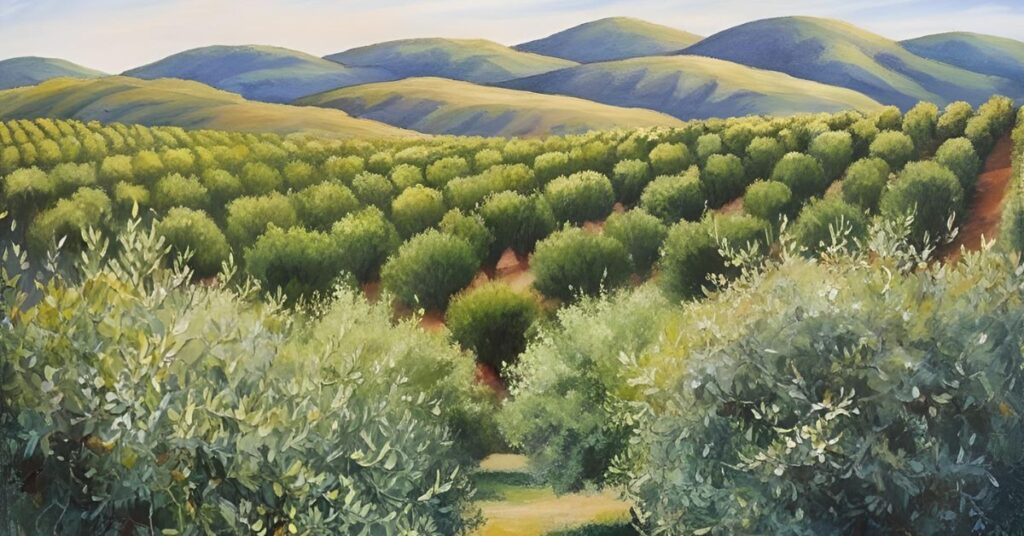
Olive Oil Production in California

Olive Oil Production in California is experiencing a dynamic transformation, positioning itself as a significant player in the global market. With a focus on sustainable practices, technological advancements, and quality assurance, the state is redefining its olive oil production landscape.
From Table to Bottle: A Strategic Shift in Olive Oil Production in California
Historically, California’s olive production was predominantly geared towards table olives. However, recent years have witnessed a substantial pivot. In 2005, only 10% of the state’s olive production was used for oil. By 2022, this figure had surged to over 75%, reflecting a strategic emphasis on olive oil production .
Embracing Super-High-Density Farming
To enhance efficiency and yield, approximately 70% of California’s oil olive acreage has adopted super-high-density (SHD) production systems. These systems allow for mechanical harvesting and pruning, leading to higher yields and more sustainable farming practices .
Diversity in Olive Cultivation
California boasts over 75 olive varieties cultivated across its diverse climates. This variety enables producers to create unique blends and flavor profiles, distinguishing California olive oils in the global market .
Quality Assurance and Standards
IL California Olive Oil Council (COOC) plays a pivotal role in maintaining high-quality standards. With over 400 growers and more than 45 olive oil mills, the COOC ensures that California’s olive oils meet stringent criteria, reinforcing consumer trust and product excellence .
Navigating Climate Challenges
Climate change poses significant challenges to olive oil production. In response, California producers are implementing sustainable practices such as drip irrigation and soil moisture monitoring to mitigate the impacts of drought and heatwaves .
Looking Ahead
With its commitment to innovation, sustainability, and quality, Olive Oil Production in California is poised for continued growth. As global demand for high-quality olive oil rises, California stands ready to meet this demand with its distinctive and premium offerings.